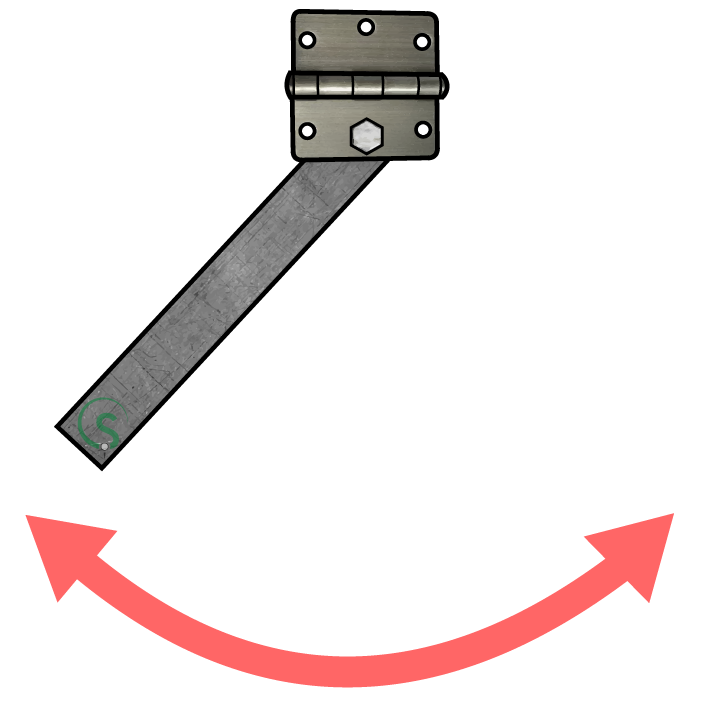Vertical Hinge Action
From horizontal hinge action, if we were to rotate the hinge on your left shoulder by 90 degrees, we’d have vertical hinge action.(1) Through impact, the left arm may only move on a vertical plane. Again, the left wrist would remain flat but it would not remain vertical. Prior to the lowest point of the swing, the palm of the left hand would be pointing somewhat upwards, and after the lowest point of the swing the left palm would be pointing downwards.
Unlike horizontal, or even angled hinge action, the left arm doesn’t move around the body after impact. Instead the left hand, and by virtue the clubhead, continue in a straight line towards the target. Like horizontal hinge action, the vertical variety causes the clubhead to trace a circle, only this time the circle is on a vertical plane, not a horizontal one.
Unlike horizontal, or even angled hinge action, the left arm doesn’t move around the body after impact. Instead the left hand, and by virtue the clubhead, continue in a straight line towards the target. Like horizontal hinge action, the vertical variety causes the clubhead to trace a circle, only this time the circle is on a vertical plane, not a horizontal one.

Vertical hinge action manipulates the clubface into laying back without closing. Because of this, the clubface will remain square to the target throughout its use. This makes it a useful for shorter shots where accuracy is paramount, like chipping or putting.
If you were to attempt to use vertical hinge action for full swings, holding the clubface square to the target and the clubhead along (and above) the target line, you’d not only disobey the Third Imperative, but you’d also be “steering”(2) the club. This is one of the “snares” Mr Kelley lists as things we should avoid when swinging the club.
If you were to attempt to use vertical hinge action for full swings, holding the clubface square to the target and the clubhead along (and above) the target line, you’d not only disobey the Third Imperative, but you’d also be “steering”(2) the club. This is one of the “snares” Mr Kelley lists as things we should avoid when swinging the club.

In order to obey the Third Imperative, maintaining the clubshaft on plane using a laying back only clubface motion, we would again imagine the left arm attached to the hinge with a single bolt. This will allow the arm to move inwards (away from the target line) as well as upwards. This is known as dual vertical hinge action.(3)
